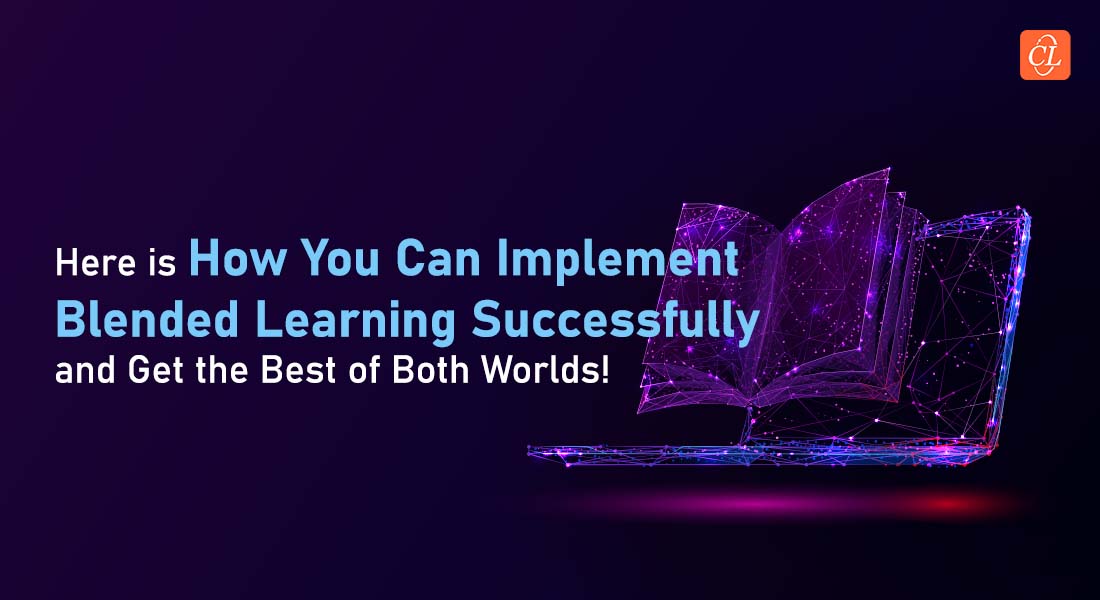How to Implement Blended Learning Successfully: What Goes Where?

The term “blended learning” refers to training that combines in-person and online instruction. By turning a portion of the ILT to eLearning, classroom training time can be reduced. But how does one choose whether training program component should be delivered in a physical classroom or online? Making the choice is challenging.
Wondering When to Use Classroom Training in Blended Learning?
Use it to:
- Acknowledge the Necessity for Direct Interaction
- Handle Uncertainties and Complex Content
- Gain Knowledge Through Practice
To discover when to include eLearning into blended learning, read more.
It’s advisable to incorporate that element of the learning experience as a classroom training component if you need to teach learners anything complicated or expect several questions since it’s a new topic. Use eLearning, on the other hand, whether you’re imparting knowledge or want to give learners a chance to evaluate their own progress.
Organizations shouldn’t spend their money just on classroom instruction. By choosing blended learning, you may take advantage of the benefits of both in-person and online training.
This blog discusses blended learning tips to choose what material is suitable for eLearning deployment and what should be delivered in a classroom.
Implementing Blended Learning? A Quick Reference for Training Managers
When To Use Classroom Training in Blended Learning
1. Acknowledge the Necessity for Direct Interaction
Classroom instruction must be employed when face-to-face interaction is required for training programs like new recruit orientation, soft skills, and leadership skills, etc.
Move that portion of a training to the classroom when you’re introducing learners to a new idea that you anticipate them to have questions about or when you believe they need an instructor’s direction.
2. Handle Uncertainties and Complex Content
Deal with the material in the classroom when your training covers eventualities and circumstances that pose a high risk to the company or have a significant influence on it.
Just use classroom component of blended learning when you are instructing learners on complicated material and want to promote a profound learning experience by allowing SMEs (Subject Matter Experts) to respond to learners’ inquiries.
3. Gain Knowledge Through Practice
You might utilize classroom training whenever you want to offer learners a chance to put their knowledge into practice, participate in debates, or think back on how much they have learned. Classroom instruction is effective when you need to immerse learners in activities like roleplays.
Blended learning can help in knowledge retention. Here’s how it can help flatten the forgetting curve.
When To Use eLearning In Blended Learning
1. Teach Procedures and Concepts
Use eLearning to instruct learners in basic ideas or practices. You can use class time to respond to trainees’ questions.
2. Increase Productivity with Skill-Based Training and Compliance Training
eLearning could be used to offer compliance and skill-based training content efficiently. For instance, trainees might need to be familiar with ERP software based on their employment. Position-based training could well be delivered through eLearning, allowing learners to take their role and complete the necessary training.
Akin to this, storytelling, scenario-based learning and compliance training aid learners in connecting the material to actual real-world circumstances.
3. Offer Chances for Self-Assessment
To enable learners to do self-assessments, assessments can be given online. For a refresher on the material covered in the assessment, learners can always return to the relevant eLearning courses.
It is also simpler for trainers to frequently review the success of their training courses when assessments are offered online.
4. Deliver Just-In-Time Training
Delivering the proper content is only part of a training manager’s duty. Additionally, they are responsible for providing performance assistance at the time of the need. To support Just-In-Time learning and increase on-the-job proficiency, digital formats can be employed, such as infographics, how-to videos, for the visual depiction of a process, or visual clues in online flashcards.
Parting Thoughts
There are many ways to give training using blended learning solutions. Based on the kind of material and the necessity, training managers can choose whether a certain component of the training is better given in the classroom or through eLearning. Smart training managers are continuously considering methods to give training that is cost-effective, focused on the needs of the employees, and beneficial to the company. It’s time, if you’ve not already, to investigate the advantages of establishing a blended learning approach in your company. For more insights, get our eBook on “Blended Learning”.




![What Exactly is the Bookend Blended Learning Model? [SlideShare]](https://blog.commlabindia.com/hubfs/Imported_Blog_Media/blended-learning-bookend-model-slideshare.jpg)
![Blended Learning for Corporate Training: Overcome 3 Implementation Challenges [Infographic]](https://blog.commlabindia.com/hubfs/Imported_Blog_Media/blended-learning-implementation-challenges-solutions-info-v1.jpg)